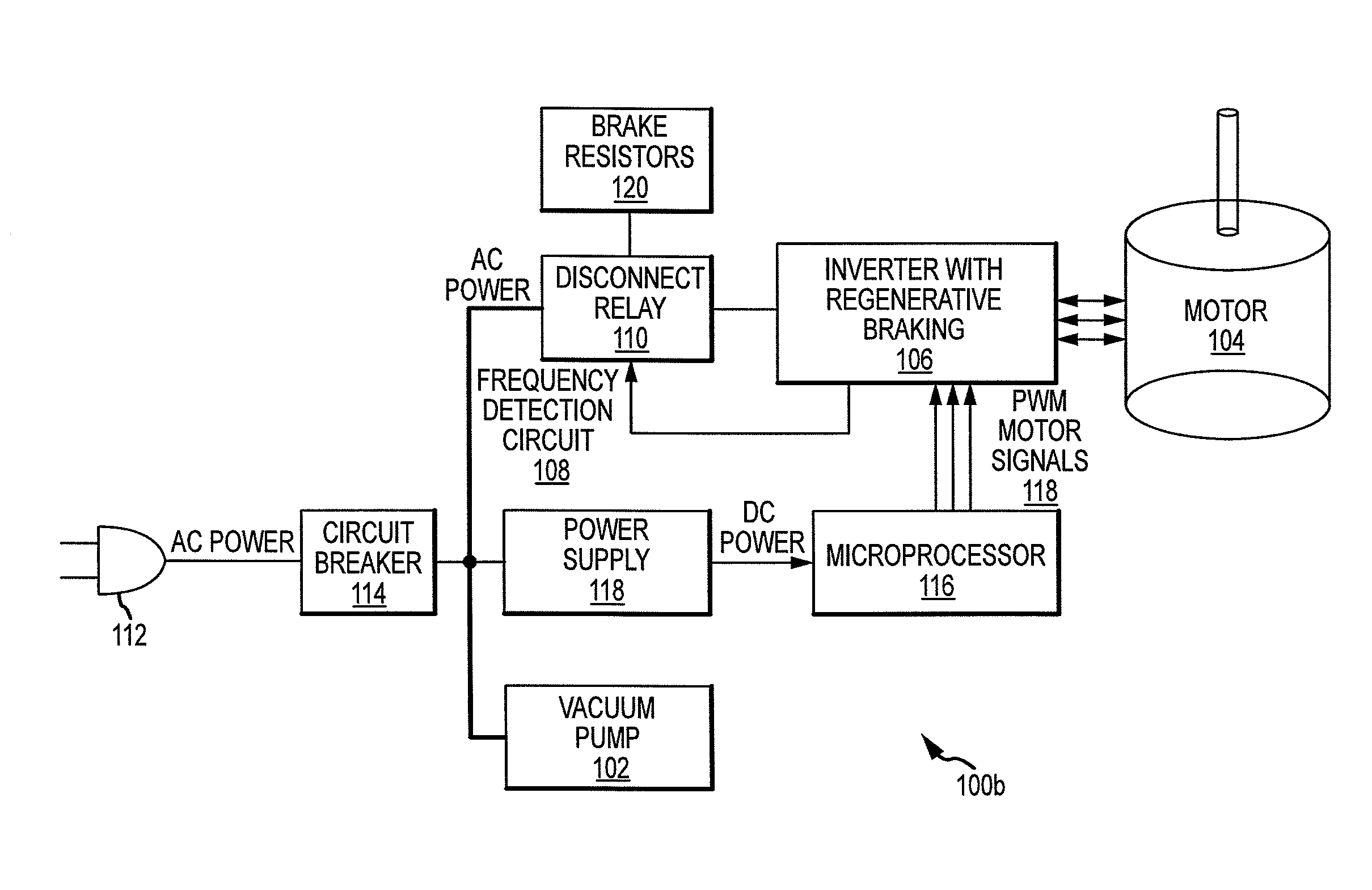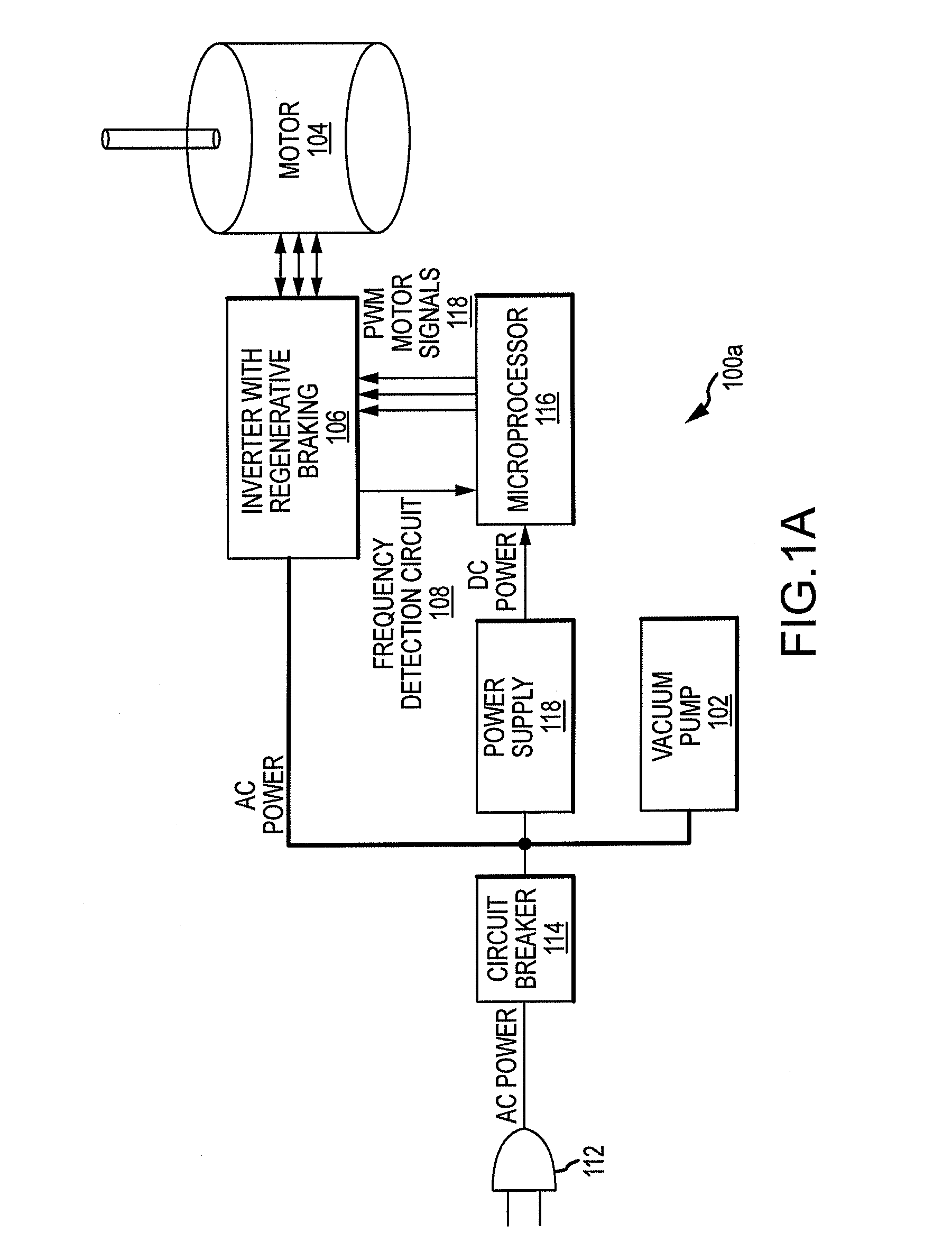Regenerative braking safety system and method of use
a safety system and braking technology, applied in the direction of motor/generator/converter stopper, dynamo-electric converter control, centrifuge, etc., can solve the problem of converting the torque applied to the load, returning a significant amount of electrical power to the power grid, and maintaining the power of the instrument itsel
- Summary
- Abstract
- Description
- Claims
- Application Information
AI Technical Summary
Benefits of technology
Problems solved by technology
Method used
Image
Examples
Embodiment Construction
[0026]The present disclosure describes a regenerative braking safety system and method. For the purposes of the present disclosure, the systems and methods described herein will be described primarily in a centrifuge embodiment, that is, as being incorporated into a centrifuge instrument having a regenerative braking system. A centrifuge is an instrument that creates a force on an object, such as a laboratory sample, by rapidly rotating the object around a fixed axis. Centrifuges typically involve the rotation of a large mass at high speeds and, thus, inherently have a significant amount of stored kinetic energy when they are turned off that can be recovered via regenerative braking. However, the reader should understand that this is but one embodiment of an instrument with regenerative braking and that the systems and methods described herein are broadly applicable to any piece of equipment that both receives power from an external source and can generate power from regenerative br...
PUM
 Login to View More
Login to View More Abstract
Description
Claims
Application Information
 Login to View More
Login to View More - R&D
- Intellectual Property
- Life Sciences
- Materials
- Tech Scout
- Unparalleled Data Quality
- Higher Quality Content
- 60% Fewer Hallucinations
Browse by: Latest US Patents, China's latest patents, Technical Efficacy Thesaurus, Application Domain, Technology Topic, Popular Technical Reports.
© 2025 PatSnap. All rights reserved.Legal|Privacy policy|Modern Slavery Act Transparency Statement|Sitemap|About US| Contact US: help@patsnap.com



